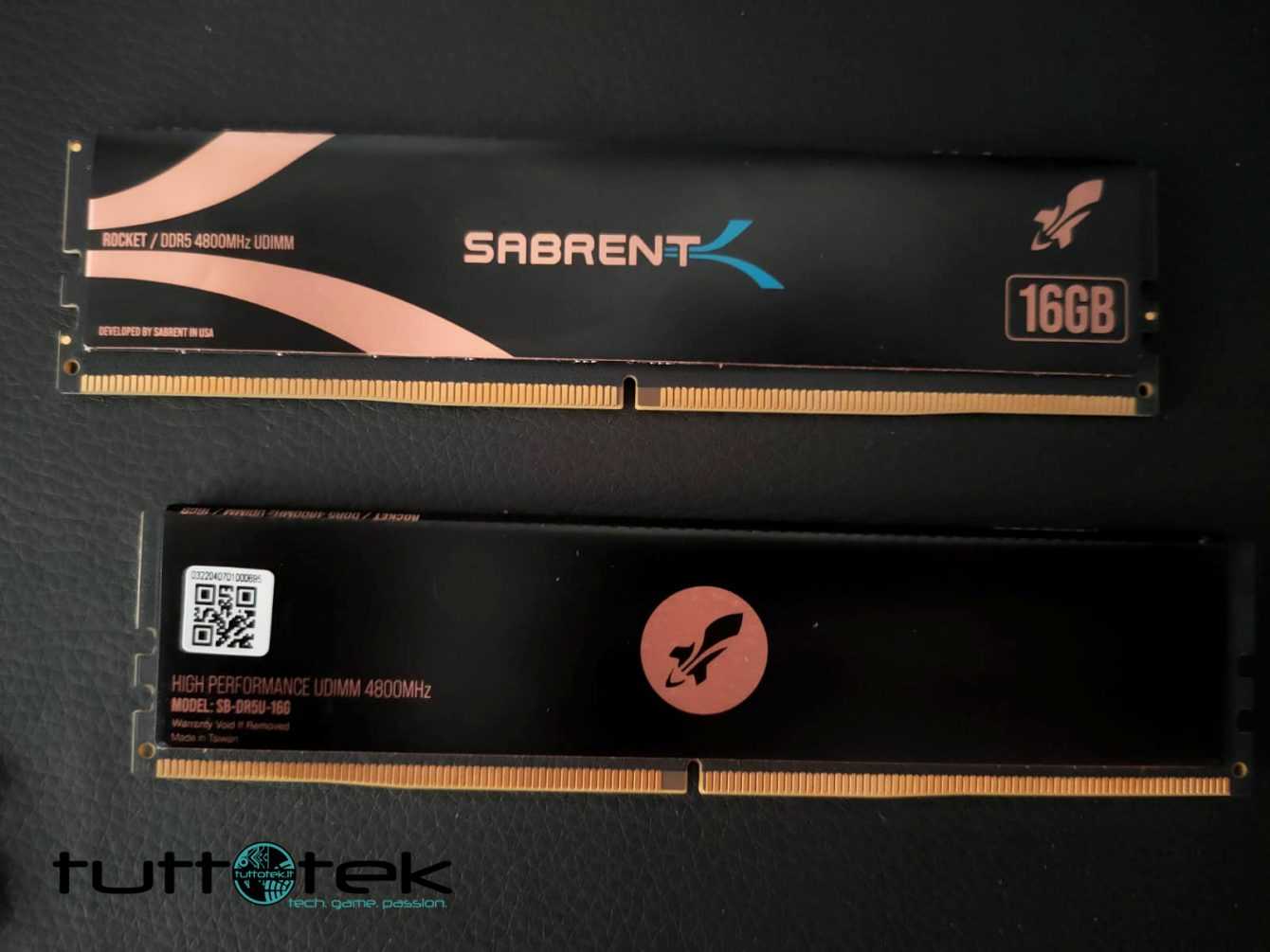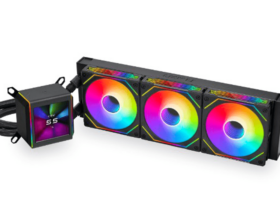Sabrent Rocket DDR5 Review: 4800MHz Low Profile RAM. In U-DIMM format they are an excellent choice for SFF systems
Today we talk about Sabrent, a manufacturer that you will surely know if you are accustomed to the world of consumer electronics, as countless times, the Chinese house has won an excellent compromise between quality and price on the main sales channels, you will certainly remember the SSD Rocket NVMe countless times included as best buy by international critics.
Today we will tell you about a bench of RAM DDR5in U-DIMM Low Profile. Which brings with it all the main advantages that such a form factor possesses, but which above all offers not indifferent speed and excellent construction.
A look at design | Sabrent Rocket DDR5 review
The design is pretty simple, as you can see. The design is the typical one that recalls the brand, no sumptuous elements and no frills like RGB LEDs. A RAM bank that points to the point, which looks to the concrete. 3.3 mm in thickness, and only 31mm in height.
Le RAM Rocket DDR5 having a profile Low Profile extreme are therefore perfect to be used in particularly compact configurations such as SFF, or mini PC, or simply with special shaped heatsinks.
The heat sink of this bench is made up of a thin layer of copper for dissipation, they are Single Side, so on the other side we find the black thermal pad. The layout is 1GB per side of the PCB instead, for single Chip. While the controller PMIC is located in the center. We will certainly not have first-rate dissipative performance but, if the dissipation of the PC in question is optimal, we will certainly have no problems managing everything. In fact, during our tests, worrying temperatures were never reached.
A technical analysis | Sabrent Rocket DDR5 review
The RAM in question are present in different denominations, with us today we have the 16GB model. To be precise, the model SB-DR5U-16G.
Sabrent with this module has entered that sector of technologies and hardware solutions now considered fundamental as regards the security in the writing and reading phase. We have On-die PMIC Protection Chip, for greater compatibility and write error protection, ECC to correct errors of a single memory bit. Then there are other On-die software systems to improve OC and XMP compatibility. The Kit is present in two variants, 16GB and 32GB.
Sabrent’s choice for this Rocket DDR5 familyin terms of the chips used, it fell on Sk Hynix. The choice is spot on, as with DDR5, we have notoriously witnessed better performance – in the overclock field – in favor of these latest modules instead of the more famous Micron and Samsung. This is certainly not a maxim, it depends on the type, but roughly the trend has been the following.
The speed for these modules is 4800MHz con 1.10V voltage. The timings are equal to 40-40-40-77, which represents the average for this type of speed and above all type of product. But also having Chip Sk Hynix the possibility that these modules reach the operating frequencies of 6000MHz with proper timing and voltages. Absolutely consistent and satisfying test carried out with Cinebenchexcellent scores, which accompany the power of the processor in question, but which above all do not create Bootle Necks.
During i test the RAM they have behaved quite well, with values that are highly respected. If we look at the value obtained with PerformanceTest in the Memory Read Cached testa test that determines the relationship between the request for archived information and the actual opening of the same, we can see a very good value, which places them among the best for this frequency. That is 36549. Il the overall test instead photographs an even better picture, especially as regards the latency itself. The technical analysis for what the software was able to read from the On-Chip profiles, we find the Q-Die Chips, excellent category for DDR5. While the JEDEC profiles are the standards that we can meet on a DDR5 module. We have a great potential in overclocking with these modules, during some tests the flexibility was optimal enough to allow a good working range, we did not carry out specific tests, as it is a LowProfile model, so in any case it is always better to stick to the SPD profiles pre-tested by the company. But the potential is there.
The conclusions
The cost is not contained. And to a similar cost, most users may be tempted to opt for more well-known brandsyet we can say, that having joined these modules with similar models in the tests, they defend themselves with respectable performance.

Under the copper cover, we find eight chips SK Hynix on each stick and their PartNumber is H5CG48MEB0X014. And the PMIC is the P8911Y0, an excellent Chip that can easily support voltages equal to 1.45V. At 4800 MHz the value of 1.20 V for the VDD / VDDQ voltages is easily an indication of excellent resistance to voltages.
The XMP profiles are well calibrated and studied, we recommend setting profile 1 for a better balance. The Design may not please everyone, and as temperatures you have to deal with 40/45 degrees, not many, on the contrary, but the PC should be well ventilated. The cost amounts to approx 179.99 dollars, and can be purchased on the official website. Overall, this is an excellent solution, which we cannot fail to recommend, for our tests carried out. If you want to continue to know the latest news from the hardware world, keep following us. Greetings from TechGameWorld.com.















Leave a Reply
View Comments